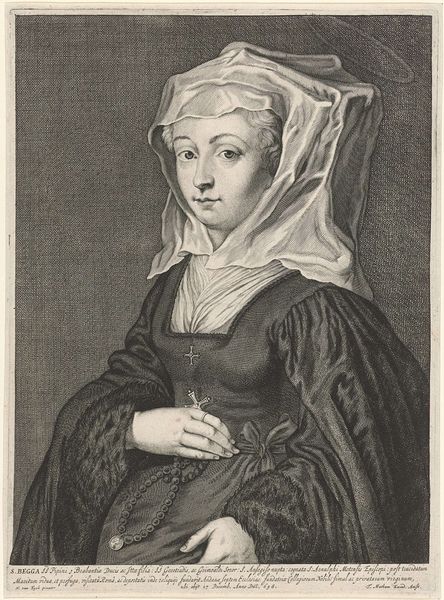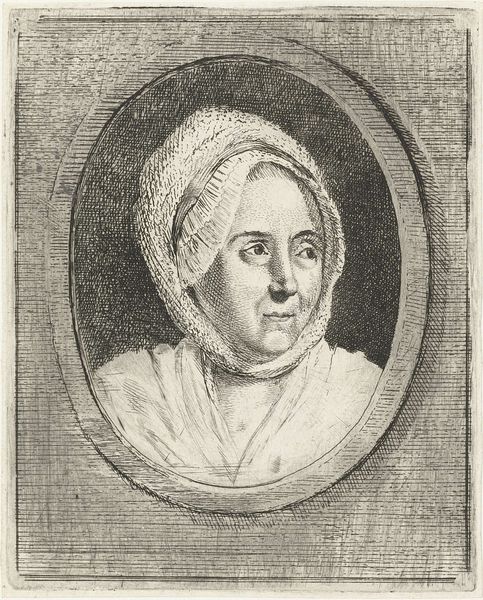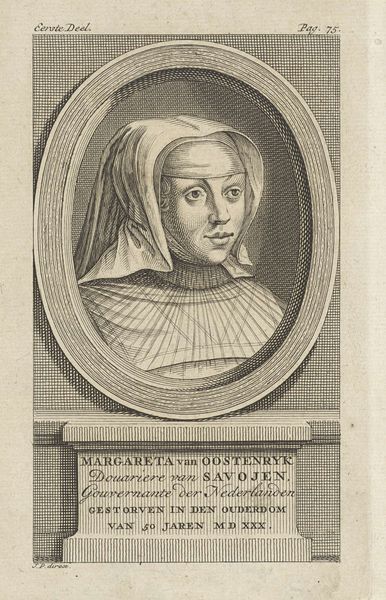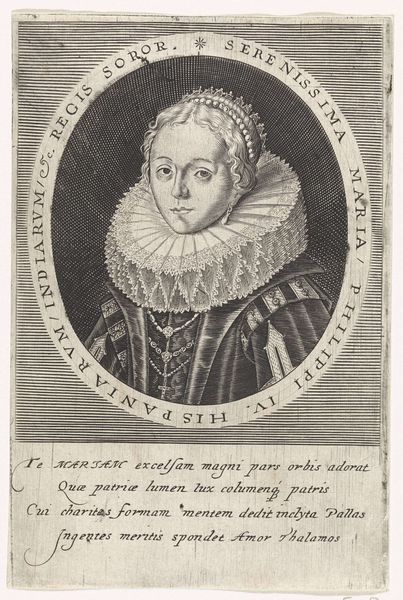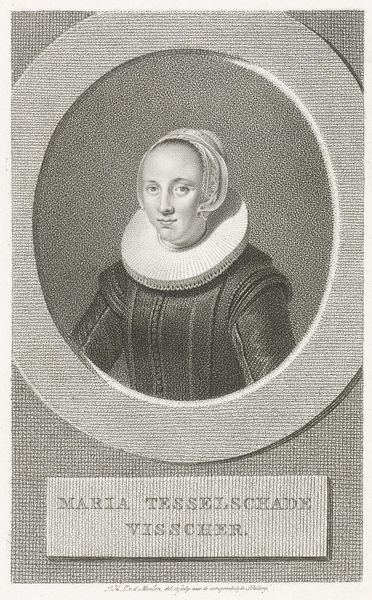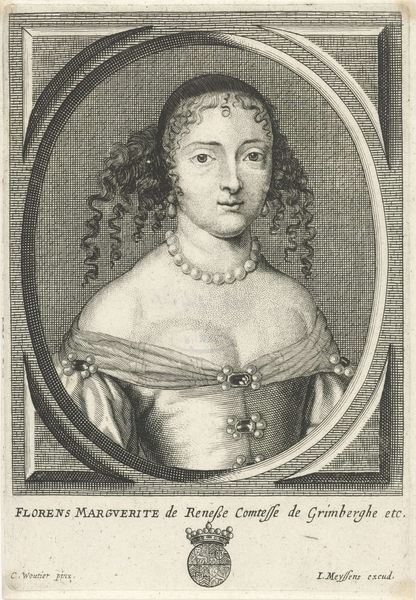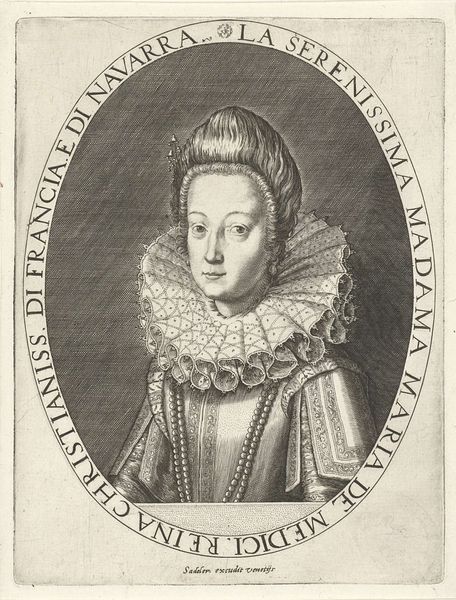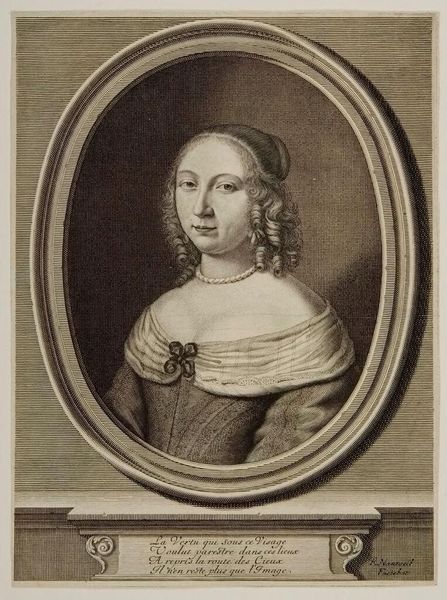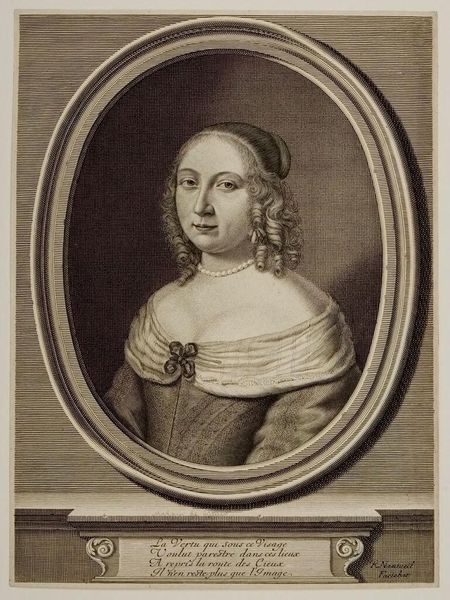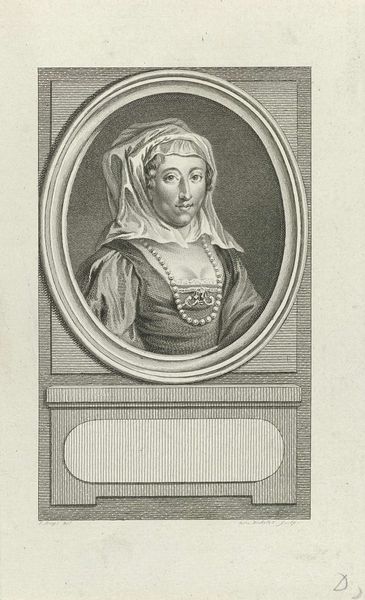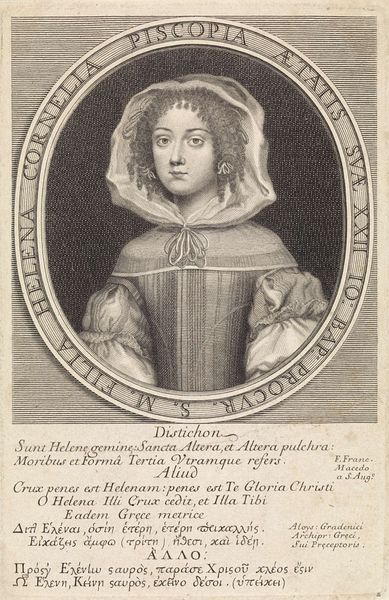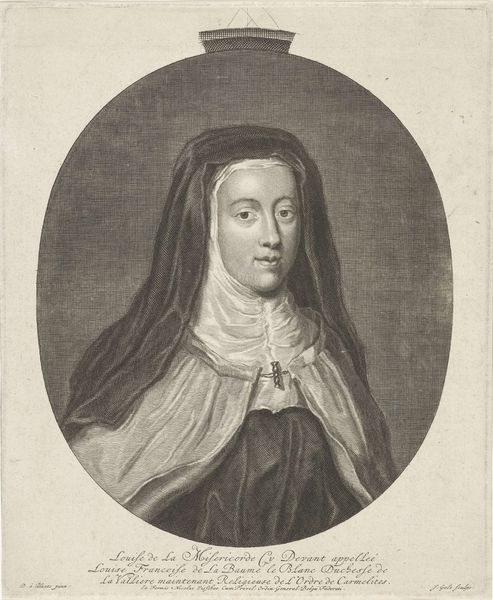
print, metal, engraving
#
portrait
#
baroque
# print
#
metal
#
old engraving style
#
figuration
#
portrait reference
#
line
#
portrait drawing
#
history-painting
#
engraving
Dimensions: height 175 mm, width 119 mm
Copyright: Rijks Museum: Open Domain
Editor: This is a rather stately portrait – "Portret van Begge van Andenne," an engraving done after 1661 by Pieter de Jode II, currently residing at the Rijksmuseum. It feels formal, almost reverential. What historical contexts are important to understanding a portrait like this? Curator: A good question. Portraits of historical figures, especially religious figures like Begge, played a vital role in shaping collective memory and legitimizing power structures. Consider the historical moment: this print was created long after Begge's actual life. What purpose did it serve to resurrect her image centuries later? Editor: So it's not necessarily about accurate representation? Curator: Precisely. It's about constructing a particular narrative. Notice the inscription – "Cœli Enarrant Gloriam Dei," or "The Heavens Declare the Glory of God." Begge is being presented as a figure of piety, aligning her with divine authority. Also, the Baroque style lends itself to this sort of idealization and grand presentation. Does that begin to reshape your initial understanding of its tone? Editor: It does! So it is political... but how does the image of this saint serve political goals? Is this intended as a symbol to look back on? Curator: That is one aspect. Prints were widely circulated. So this is to remind people of this saint and possibly what that person and time stood for to possibly help solidify contemporary structures and customs in alignment with it, such as reinforcing religious traditions. This also might relate to a rising sense of nationalism or interest in the local history. Think about the impact these easily distributed images had within society. What is highlighted and what is excluded? What are your thoughts now? Editor: Wow, I didn't even think about prints being widely accessible forms of communication back then! It gives the image a much more meaningful role than I initially imagined. Curator: Exactly. Art isn't created in a vacuum; it reflects and shapes the social and political landscape.
Comments
No comments
Be the first to comment and join the conversation on the ultimate creative platform.
